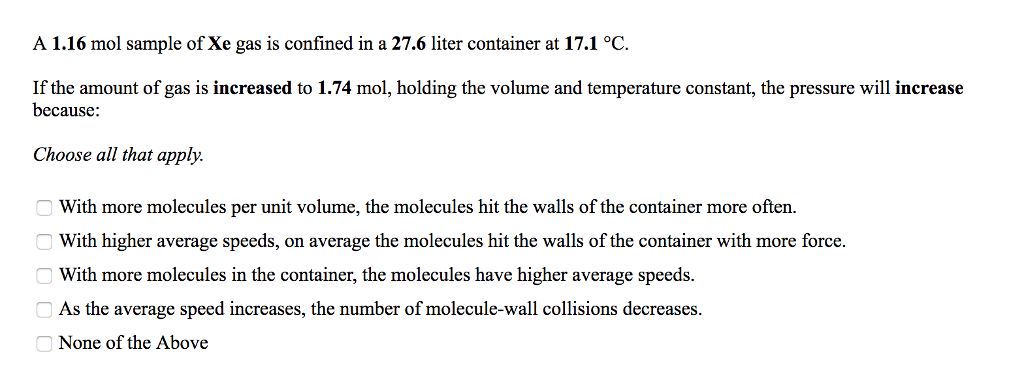CHEM 1031 Lecture Notes - Lecture 5: Ideal Gas Law, Gas Constant, Atmospheric Pressure
Document Summary
Pressure is the force exerted per unit area by gas particles (molecules or atoms) as they strike the surfaces around them. Air: homogeneous mixture of gases: 78% n2, 21% o2, 0. 9% ar, 0. 04% co2, + pollutants. Gas: atoms and molecules random motions: move very fast, various speeds, compressible large distance between them. Units of pressure: (cid:862)at(cid:373)osphe(cid:396)es(cid:863) o(cid:396) (cid:862)at(cid:373)(cid:863) a(cid:396)e ofte(cid:374) used i(cid:374) (cid:272)he(cid:373)ist(cid:396)(cid:455, 101, 325 n/m2= 1 atm, (cid:862)pas(cid:272)al(cid:863) o(cid:396) (cid:862)pa(cid:863, 1 n/m2= 1 pa, 101, 325 pa= 1 atm. Measuring gas pressure: barometer (torricelli 1608-1647) mercury barometer, usually around 760mm, height of column of hg (mercury) in the tube = atmospheric pressure, 760 mmhg = 1 atm, 1 mmhg= 1 torr. Other ways to measure pressure: manometer: u tube filled with hg. Gas laws: 4 physical properties of gases (variants, pressure, p, volume, v, temperature, t, amount, n (amount in moles, all related to each other, (cid:1005).


